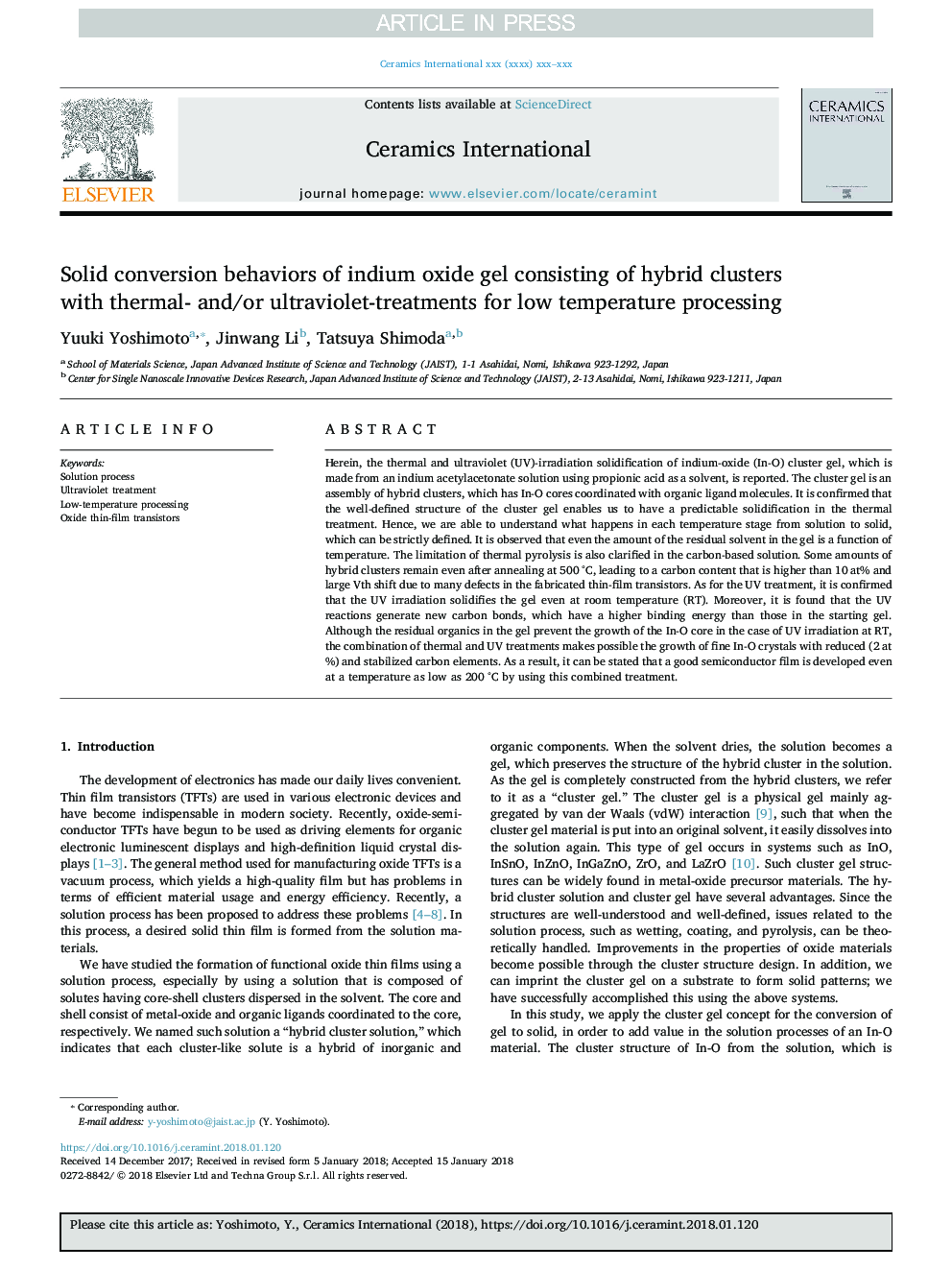| کد مقاله | کد نشریه | سال انتشار | مقاله انگلیسی | نسخه تمام متن |
|---|---|---|---|---|
| 7887456 | 1509791 | 2018 | 12 صفحه PDF | دانلود رایگان |
عنوان انگلیسی مقاله ISI
Solid conversion behaviors of indium oxide gel consisting of hybrid clusters with thermal- and/or ultraviolet-treatments for low temperature processing
ترجمه فارسی عنوان
رفتارهای جامد تبدیل ژل اکسید ایندیوم شامل خوشه های ترکیبی با فرایندهای حرارتی و / یا فرابنفش برای پردازش دمای پایین
دانلود مقاله + سفارش ترجمه
دانلود مقاله ISI انگلیسی
رایگان برای ایرانیان
کلمات کلیدی
فرآیند حل، درمان با اشعه ماوراء بنفش پردازش کم دما، ترانزیستورهای فیلم نازک اکسید،
موضوعات مرتبط
مهندسی و علوم پایه
مهندسی مواد
سرامیک و کامپوزیت
چکیده انگلیسی
Herein, the thermal and ultraviolet (UV)-irradiation solidification of indium-oxide (In-O) cluster gel, which is made from an indium acetylacetonate solution using propionic acid as a solvent, is reported. The cluster gel is an assembly of hybrid clusters, which has In-O cores coordinated with organic ligand molecules. It is confirmed that the well-defined structure of the cluster gel enables us to have a predictable solidification in the thermal treatment. Hence, we are able to understand what happens in each temperature stage from solution to solid, which can be strictly defined. It is observed that even the amount of the residual solvent in the gel is a function of temperature. The limitation of thermal pyrolysis is also clarified in the carbon-based solution. Some amounts of hybrid clusters remain even after annealing at 500 °C, leading to a carbon content that is higher than 10 at% and large Vth shift due to many defects in the fabricated thin-film transistors. As for the UV treatment, it is confirmed that the UV irradiation solidifies the gel even at room temperature (RT). Moreover, it is found that the UV reactions generate new carbon bonds, which have a higher binding energy than those in the starting gel. Although the residual organics in the gel prevent the growth of the In-O core in the case of UV irradiation at RT, the combination of thermal and UV treatments makes possible the growth of fine In-O crystals with reduced (2 at%) and stabilized carbon elements. As a result, it can be stated that a good semiconductor film is developed even at a temperature as low as 200 °C by using this combined treatment.
ناشر
Database: Elsevier - ScienceDirect (ساینس دایرکت)
Journal: Ceramics International - Volume 44, Issue 7, May 2018, Pages 7461-7472
Journal: Ceramics International - Volume 44, Issue 7, May 2018, Pages 7461-7472
نویسندگان
Yuuki Yoshimoto, Jinwang Li, Tatsuya Shimoda,
